21 Structured Plants That Make a Statement Throughout the Year
Add planting structure to your garden with these stunning varieties
Buy Proven Winners plants – Order online and have them shipped right to your door
Good garden design is the foundation of any landscape. Structure is one of the key elements, helping to establish a basic framework and a sense of order. Without structure, a garden can look too busy, or lack any focus.
Plants add a living structural component to beds, borders and containers. Choose plants with a distinct form or growth habit, which can be upright, round, pyramidal, columnar, weeping, arching or spreading. Other compelling structural elements may include leaves, flowering and fruiting attributes, seed heads, stems, and bark. Plants can also be trained on pergolas, arbors or trellises to create structure.
Structural plants can be used in many ways, from a stunning focal point for drawing attention, to a background element in a border. Choose plants that grow well in your region, and consider growing needs, mature size, and the effect you want to achieve. Try some of these structural plants in your yard.
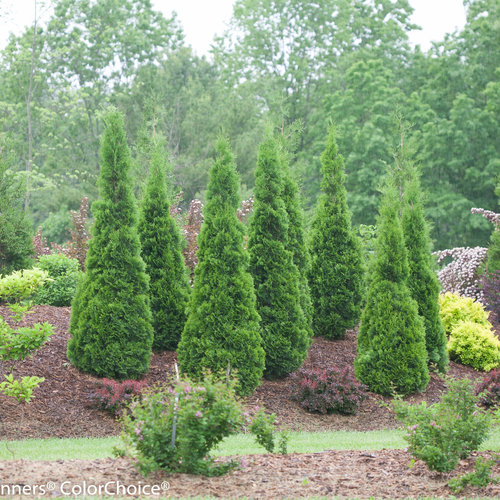 1. ArborvitaeNorth Pole® Zones: 3-8 Arborvitae is a common evergreen tree or shrub that comes in a range of sizes, shapes and foliage colors. North Pole® has a slender pyramidal habit and soft green foliage that lends background color and texture. Use as hedging or screening in small spaces. |
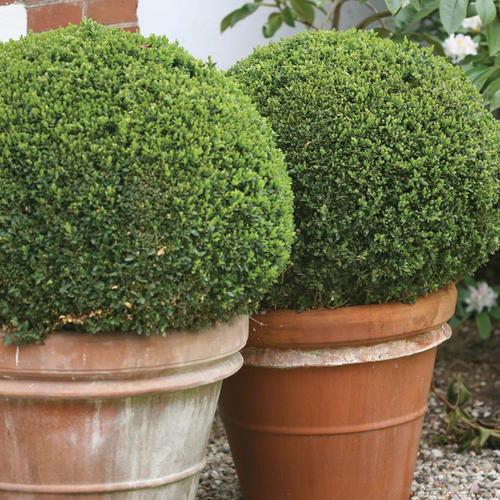 2. BoxwoodSprinter® Zones: 5-9 This versatile broadleaf evergreen shrub is commonly used in formal gardens for year-round structure. Boxwood comes in a range of sizes and shapes, with fine foliage that is highly amenable to pruning. Sprinter® has a compact rounded habit suitable for shearing into globe-shaped shrubs. Use to define garden rooms, as hedging or topiaries. |
 3. Burning BushFire Ball Seedless™ Zones: 4-8 Burning bush is an adaptable deciduous shrub grown for the fiery-red fall foliage. Fire Ball Seedless™ is the only sterile, non-invasive burning bush on the market and its mature size is very manageable. Add structure and vivid color to a fall border or foundation planting. |
 4. ButtonbushSugar Shack® Zones: 4-10 With four-season appeal, this native deciduous shrub has glossy green leaves, fragrant white flowers, red fruit, colorful fall foliage, and an attractive bushy habit. The rounded pincushion-like flowers add intriguing structure to foundation plantings and native landscapes. Sugar Shack® has a compact habit suitable for smaller spaces. |
 5. Chinese Fringe-FlowerJazz Hands Bold® Zones: 7-9 Related to witch hazel, this broadleaf evergreen shrub has an elegant layered growth habit, colorful foliage, and spider-like flowers. The deep-burgundy leaves of Jazz Hands Bold® contrast brilliantly with the bright magenta-pink flowers. Plant in full sun to partial shade, and provide well-drained soil. Add structure and color to foundation plantings, containers, and woodland borders. |
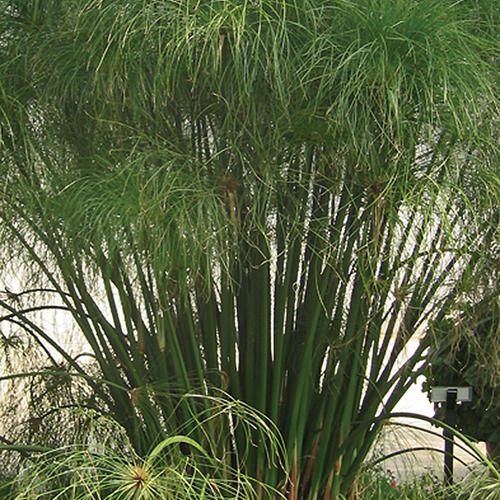 6. Egyptian PapyrusGraceful Grasses® King Tut® Zones: 10-11, grown as an annual Egyptian papyrus is a grass-like sedge with a clumping habit and spiky flower plumes. This aquatic plant adds vertical structure to a pond or stream. Use as a showy focal point in a water feature or container. King Tut® is more drought tolerant and can be planted in garden beds as long as soil is kept moist. |
 7. ElderberryLemony Lace® Zones: 4-7 Elderberry is a native deciduous shrub with ferny leaves, flat-topped flowers, edible berries, and fall color for multi-seasonal appeal. Lemony Lace® produces bright golden foliage and clusters of white flowers in spring. The dense, bushy habit and dissected leaves lend structure and fine texture to mixed borders and woodland landscapes. |
|
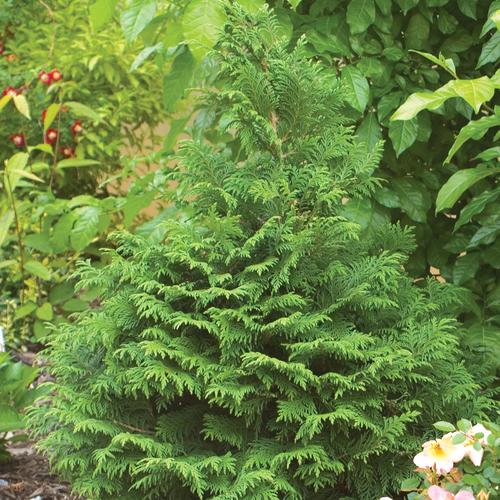 9. False CypressSoft Serve® Zones: 4-8 False cypress is a hardy evergreen conifer with fern-like foliage, occurring in an array of shapes and sizes. Soft Serve® has a compact pyramidal habit and needs little or no pruning to retain its shape and size. Add elegant structure, fine texture and color to a winter garden or shrub border. |
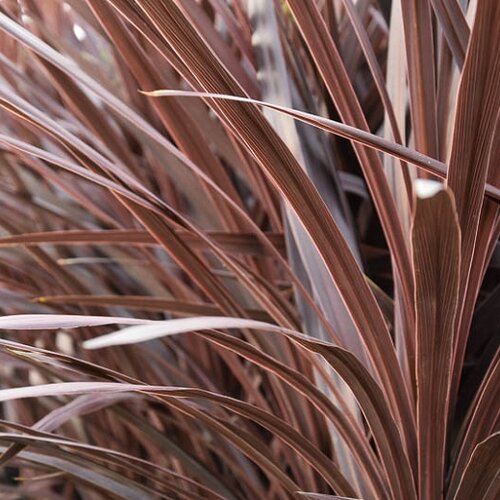 10. False Dracaena‘Red Star’ Zones: 9-11 Cordyline or false dracaena is a tropical plant grown for the sword-shaped leaves that come in different colors. ‘Red Star’ is one of the best red varieties, with narrow leaves, deep crimson coloring, and a fountain-like growth habit. Add dramatic height and bold color to a tropical border or container. |
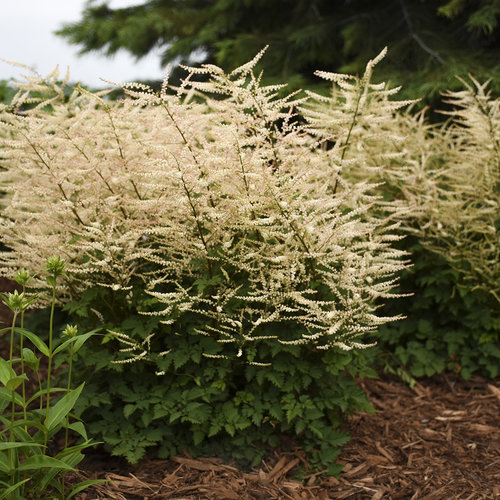 11. Goatsbeard‘Chantilly Lace’ Zones: 3-7 This hardy perennial has showy plume-like flower spikes and deeply dissected leaves. ‘Chantilly Lace’ produces tall cream-colored flowers on sturdy upright plants. The bushy habit and finely textured flowers offer structure and background interest to a herbaceous border or woodland landscape. |
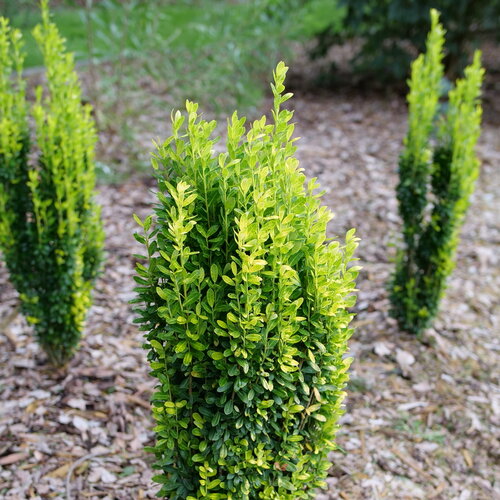 12. Japanese HollyGlow Stick® Zones: 5-9 Japanese holly is a broadleaf evergreen shrub that provides year-round structure. The slender upright form of Glow Stick® is useful for small or narrow spaces, with glowing golden foliage that brightens up darker areas. Use in containers, as hedging, or a focal point in the landscape. |
 13. Japanese MapleSamurai Sword™ Zones: 5-8 This small- to medium-sized deciduous tree is revered for the elegant canopy, dissected leaves, and brilliant fall color. Samurai Sword™ grows quickly, with a tall oval shape and bright-red or burgundy foliage. Use as a single specimen or focal point. |
 14. MangaveArt & Sol™ ‘Night Owl’ Zones: 9-11 This agave hybrid has a broader range of forms and leaf colors, and is moisture tolerant. The broad spiky foliage and nearly black coloring of Art & Sol™ ‘Night Owl’ adds dramatic structure and color to containers and beds. Coloring is best in full sun. Use this succulent as a focal point or unique specimen. |
 15. Panicle HydrangeaLimelight Prime® Zones: 3-8 Panicle hydrangea is a hardy deciduous shrub grown for the cone-shaped flowers that add late-season interest to the landscape. Limelight Prime® blooms earlier in the season, with green flower panicles that develop pink and red tones as they mature. Use as a structural element in containers, as hedging, or a showy focal point. |
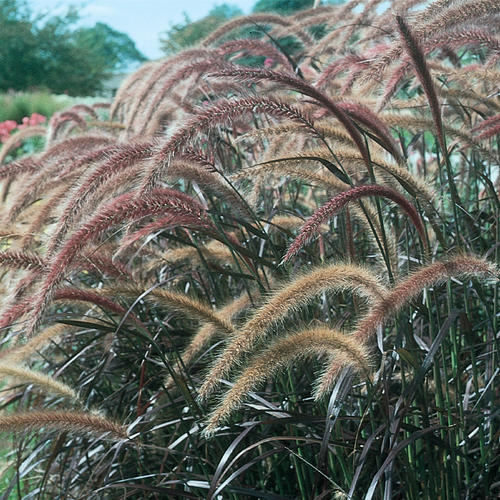 16. Purple Fountain GrassGraceful Grasses® Purple Fountain Grass Zones: 9-11 This warm-season ornamental grass has an elegant arching habit, deep-burgundy foliage, and large pink flower plumes, providing dramatic structure, texture and movement. Use purple fountain grass in a container or border for a compelling display from summer until frost. |
 17. Red Hot PokerPyromania® ‘Orange Blaze’ Zones: 5-9 Also known as torch lily for the statuesque flower spikes that resemble flaming torches, this perennial adds sizzling color and vertical structure to the landscape. The bright-orange flowers of Pyromania® ‘Orange Blaze’ are long lasting, offering a tropical touch to mixed borders and containers. Use in mass plantings, or as a showy focal point. |
 18. RedbudMidnight Express® Zones: 5-8 This native deciduous tree has multi-seasonal appeal, with pink flowers in early spring followed by heart-shaped leaves that turn yellow in fall. Midnight Express® has an upright habit, with rich burgundy leaves that hold their color throughout the growing season. Use as a street tree or showy specimen. |
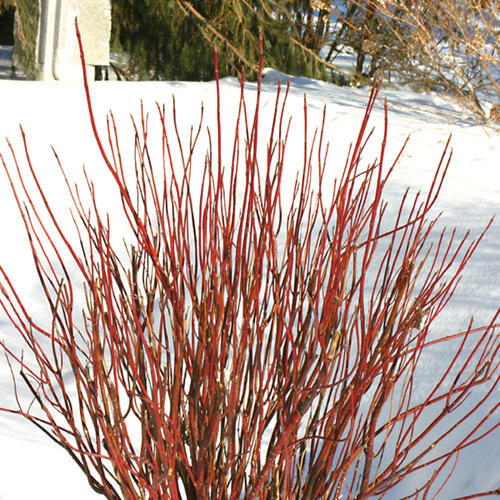 19. Red-Osier DogwoodArctic Fire® Zones: 2-7 This suckering shrub has four-season appeal, with deciduous green or variegated leaves, spring flowers, purple or white berries, brilliant fall foliage, and vivid stems that add color and structure to the winter landscape. Arctic Fire® has brilliant-red stems and a dwarf growth habit suitable for smaller yards. Use in a container, mass planting, or native garden. |
 20. Rose of SharonPurple Pillar® Zones: 5-9 Rose of Sharon is a hardy hibiscus with trumpet-shaped blooms that lend tropical flair to the landscape. These deciduous shrubs provide color and structure in mixed borders, foundation plantings, or as hedging. Purple Pillar® has purple blooms and a unique columnar habit that is useful for narrow spaces and smaller yards. |
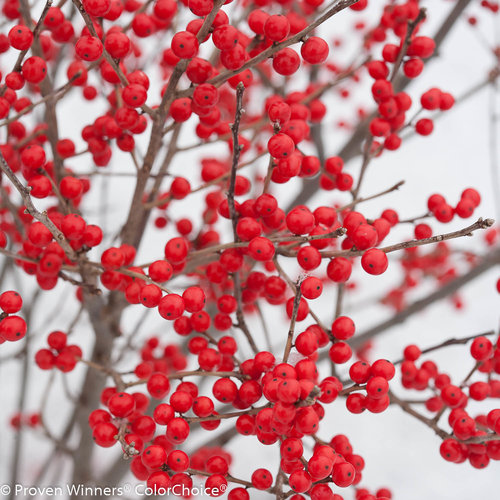 21. WinterberryBerry Poppins® Zones: 3-9 A type of holly, this deciduous shrub is grown for the shiny red berries that provide bright color in the winter landscape. Berry Poppins® has a dwarf habit up to 4 feet wide, producing a heavy crop of berries. Naturalize in a native landscape, or use as a showy accent in a winter garden. Don't forget that a male pollinator is required in order to set fruit; use Mr. Poppins® winterberry holly. |
FAQs
What is a structural plant?
Sometimes called “architectural plants” or “statement plants,” these are characterized by their strong shape that provides the foundational structure or “bones” of a garden. Structural planting provides a sense of order and framework, a core component of garden design. Woody plants provide year-round interest.
How to give structure to a garden?
Structured gardens can be achieved through hardscaping such as pathways, patios and walls; features such as pergolas, arbors and trellises; and living elements such as trees, shrubs and perennials. When these elements are combined, they provide the backbone and foundation of any well-designed landscape.
What is structure in a garden?
Features with shape and form enhance the landscape, providing year-round interest even when plants are dormant. Structure helps define garden areas, gives the eye a place to rest, and establishes a sense of place and order. Without structure, an outdoor space can be chaotic and lacking in focus.
Buy Proven Winners plants:





